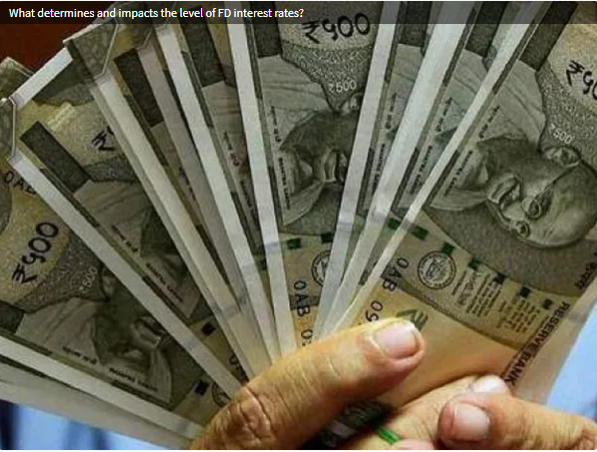The good old, reliable FD may be failing savers with rates plunging. In fact, it is a trend that is likely to continue for the next two to three years as per experts.
Mumbai: Remember the heydays of double-digit returns on Fixed Deposits? Well, those days are behind us and a return to that golden era for depositors is unlikely. India’s largest bank, the State bank of India made two rate cut announcements in just May this year. On May 12, SBI lowered interest rates by 20 basis points for FDs up to 3 years. This was followed by a 40 basis point cut across tenors on May 27.
So, what determines and impacts the level of FD interest rates? The monetary policy adopted by the Reserve Bank of India, liquidity situation of banks, rate of inflation, and demand for loans – all influence a bank’s decision to cut or hike FD interest rates. Although, the major factor causing a steady cut in interest rates currently is the ample liquidity in the banking system.
The other deciding factor for FD interest rates, the credit off-take for banks, has seen a slowdown due to COVID-19. According to the latest data from RBI, credit growth for scheduled commercial banks moderated to 6.4 per cent between April and June 2020, from 11.7 per cent a year ago. While aggregate deposits growth accelerated to 11.5 per cent in the quarter, as compared to 10.1 per cent last year. The credit to deposit ratio which is a measure of how much the bank lends from the deposits it has received has also seen a decline. From 76 per cent in the fourth quarter of FY20, the credit to deposit ratio declined to 73.1 per cent in the first quarter of FY21.
Also Read: DRDO Successfully Tests Hypersonic Vehicle; Here’s What This Means For India’s Future Missiles
Lakshmi Iyer, CIO of Debt & Head (Products) at Kotak AMC says, “The Indian banking system is currently flush with liquidity, close to about Rs 7 lakh crore. Because of this sluggish economic phase, the credit off-take of the banking system is in low single digits. While the accretion in the form of bank fixed deposits is in reasonable high double digits. That itself is suggesting that the bank deposit rates are unlikely to rise anytime in the near future.”
To put it simply – banks are earning less from lending, while deposits are piling up as customers rushed to park their funds amidst uncertainty. Lower interest rates received from loans disbursed, coupled with adequate liquidity, leaves no incentive for banks to lure customers or pay them more on their fixed deposits. Banks are also parking their own funds at a reverse repo rate of 3.35 per cent which is the lowest in a decade. Since banks are earning lower interest, the interest outgo too will be lowered by banks.
Maneesh Dangi, CIO of Fixed Income at Aditya Birla Sun Life AMC calls this a theme of financial repression for Indian depositors. “It is very likely that banks would continue to reduce FD rates for the one to two years tenor for the next two to three years. The broad theme is that there is financial repression. There is very little that one earns in fixed income, which is why one must go to equities,” Dangi explains.
The fixed deposit has been the gold standard of saving for the average Indian household. Senior citizens are especially dependent on returns from fixed deposits during retirement years. While the focus is usually on loan rates that need to be low to boost a sagging economy, the crisis for the Indian saver is clearly a growing one.


